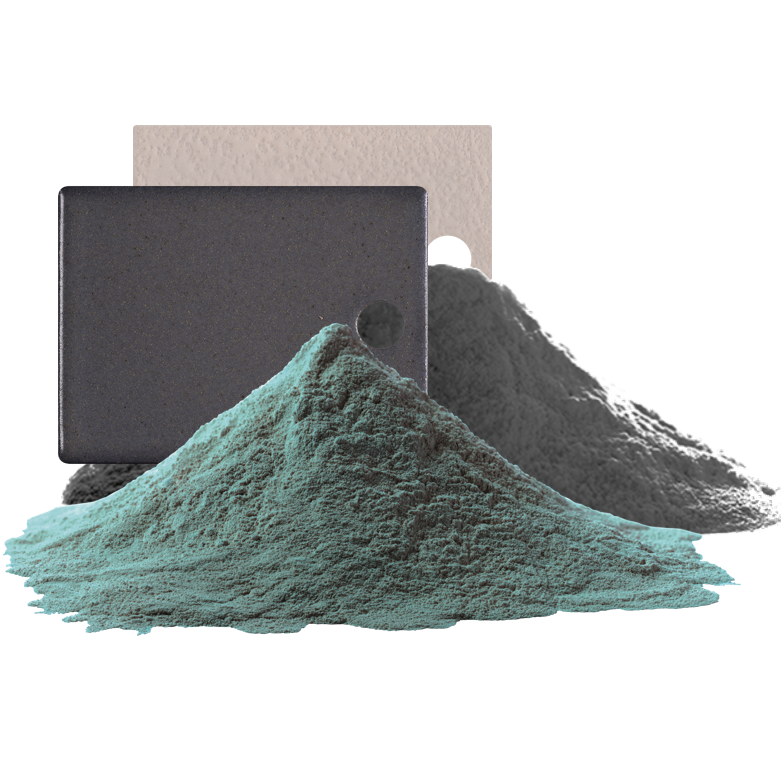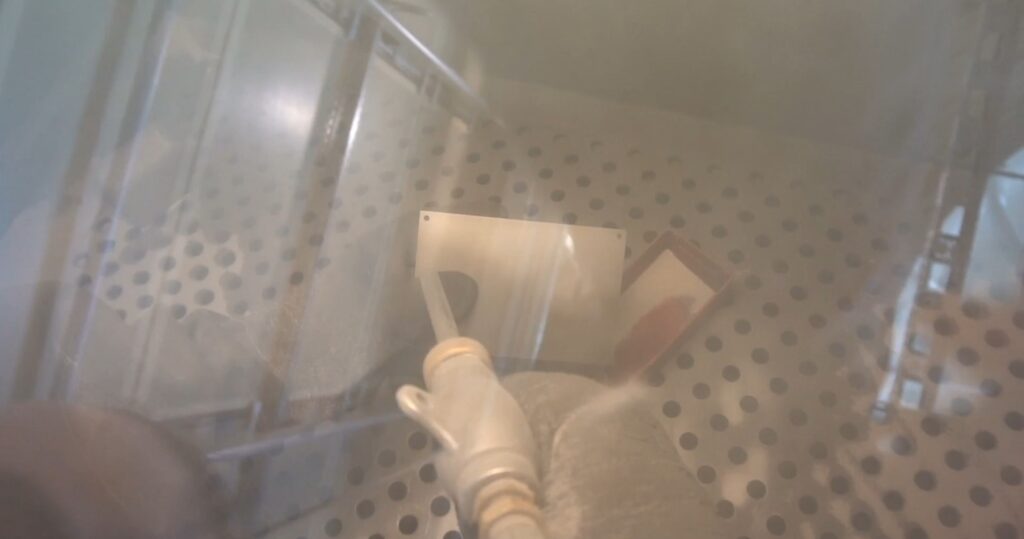Powder coating as wear protection? – That's how it works!
igu-blog-adm | 2. August 2022
Powder lacquering, also known as powder coating, can be easily applied to conductive materials by means of electrostatic charging. For this purpose, the component is charged and the powder is applied using a spray gun in the tribo or corona charging process. The powder adheres to the component and thus builds up a uniform layer. The coating on the component is then cured by heat. Depending on the component and material, the dwell time is 5 – 30 minutes. Unlike wet paint, you can use the component directly after the coating process, as there is no curing time.
How does powder coating work? – Wikipedia
Various coating powders
There are different powders that can be used in a wide variety of applications. Be it for optical or technical reasons. Polymer coatings made of iglidur® IC materials exemplarily serve as a direct wear layer and can therefore reduce the coefficient of friction and wear in an application without having to introduce additional components into the design.

Layer thicknesses of powder coatings
A layer thickness of about 60 – 120µm is the standard here. However, depending on requirements, a higher layer thickness can also be achieved. Depending on the multiple coating, even up to 500µm. This gives you a thicker wear layer to protect the component.
Surface of components and coating
For preparation, the substrate must be free of grease, oils, release agents and drawing agents as well as dirt, corrosion products and other contaminants. Pretreatments, such as for e.g. blasting, roughening, phosphating, descaling, etc., can contribute to better adhesion.

Depending on the powder and layer thickness, you get a rough or smooth surface. It is not possible to determine the roughness of coatings using the known methods. In the case of polymer coatings, it is generally the case that even if the surface is rough at first, it shrinks and has no negative influence on the coefficient of friction. In principle, the coated surface can also be reworked, for e.g. by polishing.
Design of the component to be powder coated
For components with 90° edges, you should be careful that it doesn’t lead to edge thinning. The coating is then accordingly thinner at the edges. You can counteract this by rounding the corners. It is helpful for the coating process to have holes in the component that allow them to be suspended.
What is edge thinning? – Wikipedia
If holes are generally coated, the following rough rule of thumb applies: 10mm hole diameter can be coated up to a depth of 10mm. 20mm with 20mm depth, up to approx. 30mm. This is due to the spray gun and the charging of the component. If you only want to coat your component in certain areas, the areas can be masked off. This is usually associated with additional effort and is more expensive than coating the entire component directly, as the required powder is not as significant.
We would be happy to assist you!
Do you need support?
We would be happy to assist you in the designing of your powder-coated component.

